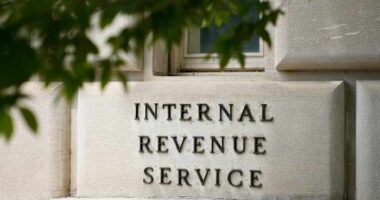
After facing a series of challenges like job reductions, changes in management, and other issues at the Social Security Administration, the new commissioner of the agency was questioned by legislators about its future prospects. The discussion revolved around the agency’s capability to deliver benefits to Americans promptly while safeguarding their personal information.
The recently appointed commissioner, Frank Bisignano, who took office as President Donald Trump’s choice to head the agency, assured lawmakers of his plans to enhance the accuracy of payments and boost the morale of the workforce. The agency had already seen a reduction of 7,000 employees following cost-cutting measures implemented by Elon Musk’s Department of Government Efficiency earlier in the year.
Bisignano emphasized to lawmakers that simply increasing staff numbers would not solve the underlying issues. Instead, he outlined his strategy to focus on technological advancements that would enable the agency to operate efficiently with a leaner workforce. The commissioner emphasized a shift towards a digital-first approach, aiming to transform the organization into a technology-driven entity with a strong emphasis on serving the public.
He called it his “personal goal” to have a “highly motivated workforce” and raise the agency’s standing after three straight years of ranking last among government agencies in employee satisfaction.
Bisignano testified that roughly 2,000 workers have been voluntary reassigned into direct-service positions at SSA, and nearly 3,700 employees have voluntarily left the agency. In 2026, he said, “we will focus our hiring efforts on highly skilled IT staff and field offices with staffing gaps that impact our ability to deliver.”
Bisignano took over an agency after a series of chaotic customer service changes, leadership exits, and false allegations made by the president and Musk that millions of dead people were receiving benefits.
The chaos at the agency began shortly after acting commissioner Michelle King stepped down in February, a move that came after DOGE sought access to Social Security recipient information. That prompted a lawsuit by labor unions and retirees, who asked a federal court to issue an emergency order limiting DOGE’s access to Social Security data.
The U.S. Supreme Court recently decided not to lift restrictions on the access that DOGE has to Social Security systems containing personal data on millions of Americans.
In February, the agency announced plans to cut 7,000 people from the agency payroll through layoffs, employee reassignments and an offer of voluntary separation agreements, as part of an intensified effort to shrink the size of the federal workforce.
During the Wednesday hearing, Bisignano was called to answer for several statements by Musk, including the billionaire’s claim on a podcast earlier this year that Social Security was “the biggest Ponzi scheme of all time.”
The SSA provides benefits to roughly 72.5 million people, including retirees and children.
In disagreeing with Musk, Bisignano repeated the phrase: “I agree it’s a promise to pay.”
The Social Security Administration could have to cut benefit to recipients if Congress does not act to adequately fund the program.
The go-broke date — or the date at which the programs will no longer have enough funds to pay full benefits — was recently pushed up to beginning in 2034, instead of last year’s estimate of 2035, because of new legislation approved by Congress. Social Security ’s trust funds — which cover old age and disability recipients — would then only be able to pay 81% of benefits, according to an annual report released last week.
The potential deficit has not been addressed in the tax cut and spending bill currently making its way through Congress.
___
Copyright 2025 The Associated Press. All rights reserved. This material may not be published, broadcast, rewritten or redistributed without permission.

















